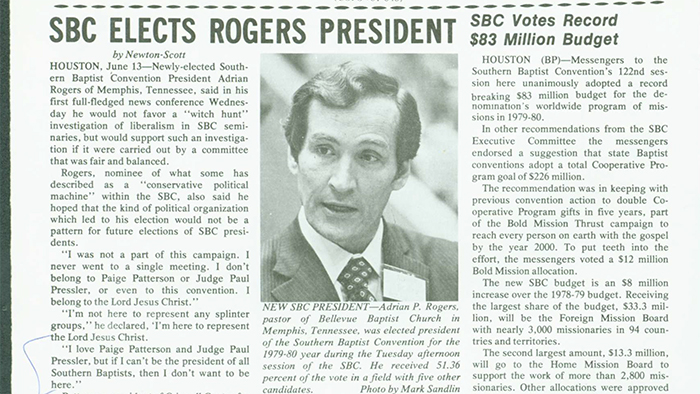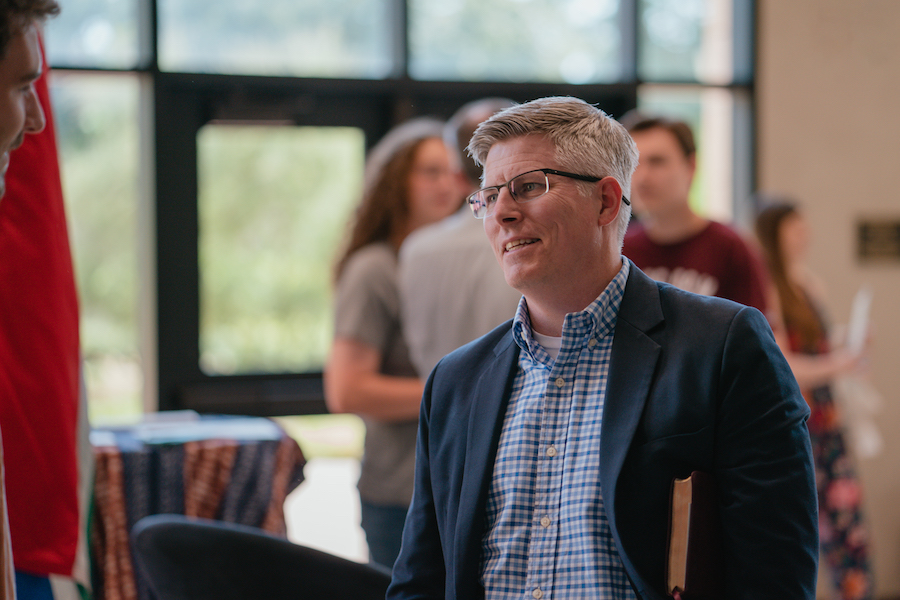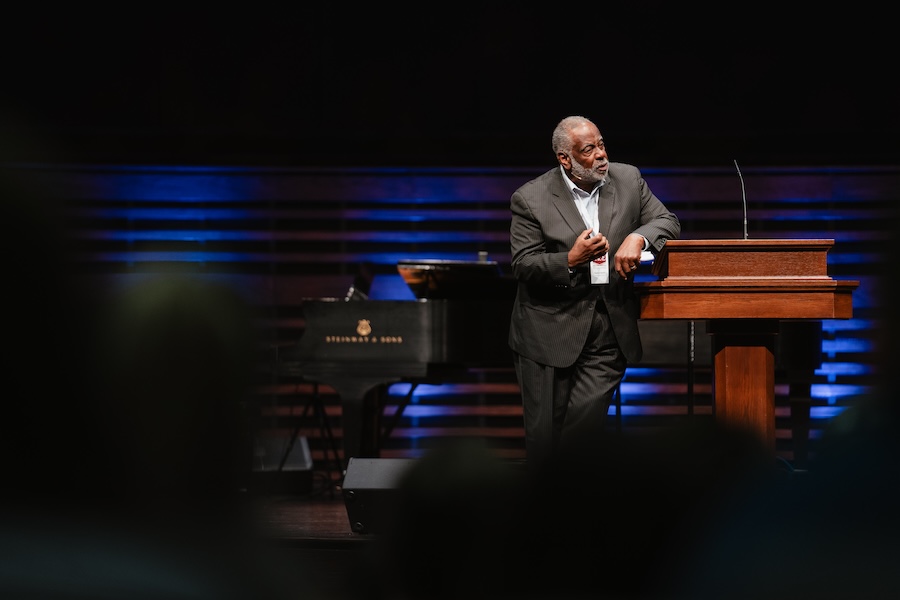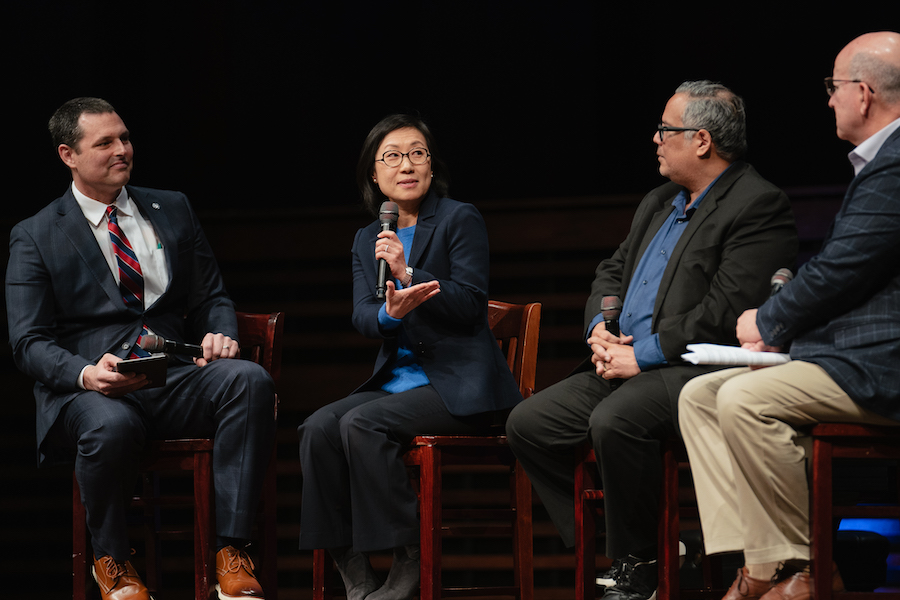New collection provides access to primary sources from Conservative Resurgence

A new collection in the Southwestern library’s digital archive, titled “The Paige Patterson SBC Conservative Resurgence Collection,” allows users to see and interact with materials pertaining to Southwestern Seminary President Paige Patterson’s role in the Conservative Resurgence of the Southern Baptist Convention. Materials include letters, pamphlets, and audio recordings of conference presentations and debates significant to this period of Southern Baptist history.
“Dr. Patterson is one of the persons most closely identified with the Conservative Resurgence,” says Dean of Libraries Craig Kubic. “His impact and his directing of the process is captured in this collection. One really cannot fathom the breadth and depth of the experience without reading his life history as it is reflected in these materials.”
The Conservative Resurgence was an effort spanning the 1970s-1990s in the Southern Baptist Convention (SBC) to take a strong stand for the inerrancy of the Bible as well as to ensure that this position would be propagated in the Convention’s seminaries. Paige Patterson, then president of Criswell College, was one of the architects of this movement along with Judge Paul Pressler.
Madison Grace, chair of the Church History department at Southwestern, says, “Though the mechanism behind the resurgence involved understanding and utilizing the political structure of the Convention, it was not a movement driven by power. Rather, the importance of the Conservative Resurgence was ultimately the future of SBC churches.”
Grace explains that, from its inception, the purpose of SBC educational life, especially in the seminaries, was to aid churches, which is accomplished through the seminaries’ efforts to educate and train future pastors and minsters of the churches. The particular education offered by a seminary, Grace says, will eventually affect all the churches that that pastor or minister touches.
“Though there has always been room in Baptist thought for dissenting opinions on doctrine,” he continues, “there has also always been a strong core identity on what it means to be a Baptist. The Conservative Resurgence addressed an errant shift in the doctrine of the Bible taught at SBC seminaries and intended to correct that error by holding the seminaries accountable to the Convention’s doctrinal standard on the Bible, especially in regard to inerrancy.”
The resurgence began in 1979 with the election of Adrian Rogers as SBC president. In the years that followed, messengers continued to elect conservative presidents who appointed conservative trustees to govern SBC agencies. By the 1990s, the six Southern Baptist seminaries, including Southwestern, had returned to the conservative beliefs on which they were founded and affirmed the inerrancy of the Bible.
As such, pastors and ministers coming up through the seminaries were instilled with a high view of Scripture, and this, in turn, has impacted the churches. The Conservative Resurgence was significant, then, because, as Grace asserts, it was necessary in order to ensure that future SBC pastors would continue to believe and preach the authority and inerrancy of God’s Word.
The new collection in Southwestern’s digital archive contains materials tracing the history of this significant movement. One such item is a letter from Patterson to Adrian Rogers, dated June 15, 1976, encouraging him to accept the nomination as SBC president. Also significant is an audio recording of a 1980 debate between Patterson and well-known Texas Baptist Cecil Sherman on the topic of biblical inerrancy. These and other resources offer unique insight into this tumultuous period in the SBC.
“The value in interacting with this collection, beyond the obvious purpose of learning about the history of the Conservative Resurgence, is that a researcher can engage with primary sources from the Conservative Resurgence,” Grace says. “This activity takes one back into the time of the resurgence and allows a glimpse of what it was like to be involved in this monumental endeavor.”
The Paige Patterson SBC Conservative Resurgence Collection may be accessed here. More materials will be added as they are collected and archived.



